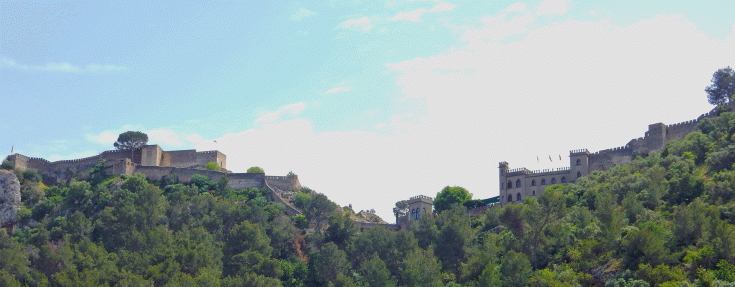In Valencia, the crispy caramelized socarrat around the edges of the paella pan is a cook’s goal, but scorched is far from ideal when applied to your town.
Spaniards have referred to residents of Xativa as socarrats since the early 1700s. Flush with victory at the Battle of Almansa securing Spain for the Bourbons, the vengeful Phillip V (1683-1746) ordered the town taken and set ablaze. Felipe has not been forgiven, his portrait condemned to hang upside down in the city’s Almodi Museum.
The twin peaks of Monte Vernissa above Xativa have been fortified since Roman times. Himilice, the wife of Hannibal, gave birth to a son there in 218 B.C. Although the fortress appears difficult to conquer, sometimes alliances place one on the conquered side because of battles lost elsewhere.
While under Moorish control, Xativa became the 12th-century European center for production of paper. Most of the walls stretching across the two hilltops today are preserved from the Islamic and Gothic periods. Portions of the castles and fortifications were rebuilt more frequently, including the upper Santa Fe Tower – destroyed by a gunpowder explosion in 1563, an earthquake in 1748 and the French in 1813.
Xativa was home to the powerful Borgia family, known for their Machiavellian political maneuvers. Two of the Xativa-born Borgias became popes, Calixtus III (1378-1458) and Alexander VI (1431-1508). The city also takes great pride as the birthplace of the painter Jose de Ribera (1591-1652).
Out of respect for possible remaining scorched sensibilities, the Mister opted for rabo del toro instead of socarrat-crusted paella. Translated literally, this means bull’s tail, making one think this was one way Spain took care of the remnants of bullfights. But it is oxtail, slowly cooked to an extremely tender stage and served with the resulting rich broth.
















